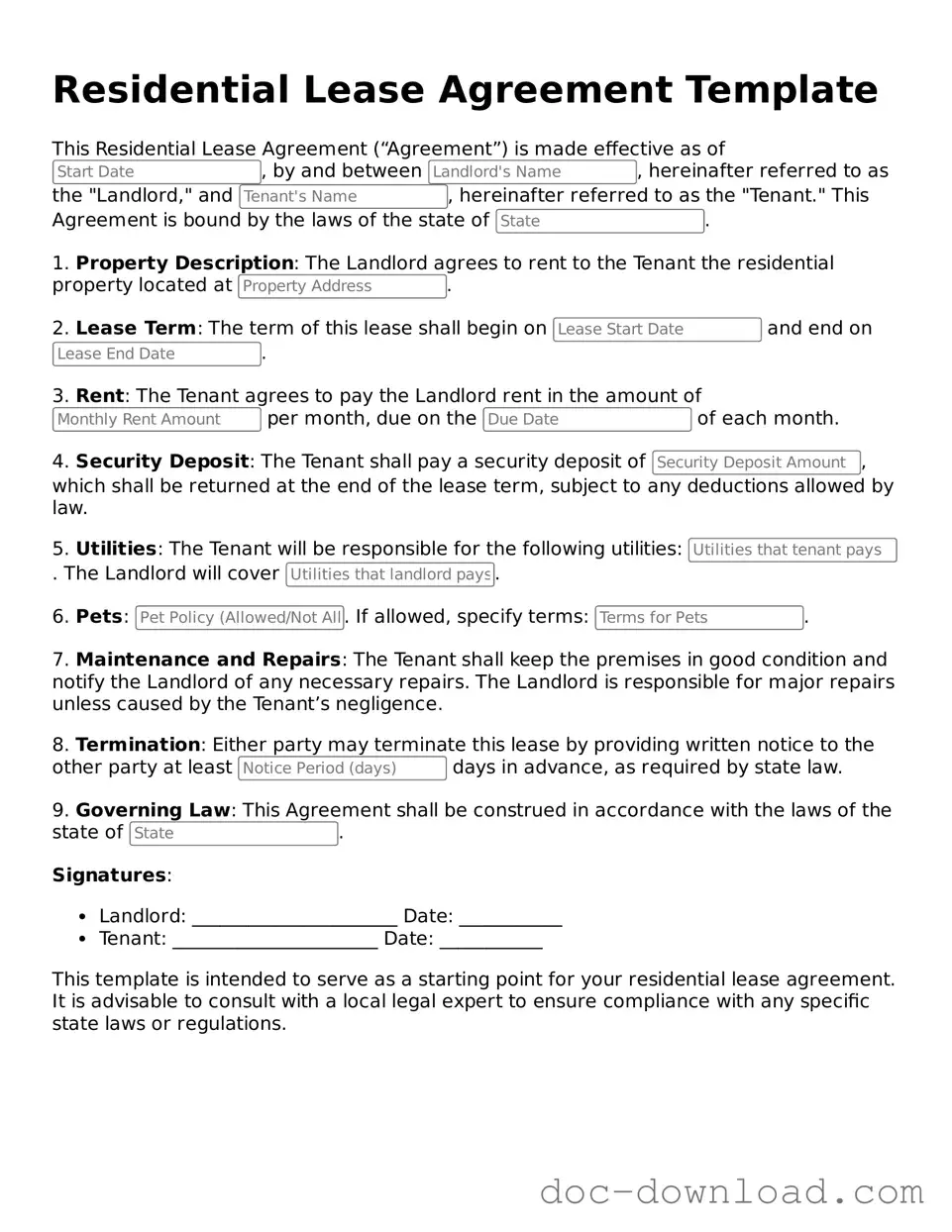The Residential Lease Agreement is similar to a Commercial Lease Agreement, which is used when a business rents property for commercial purposes. Both documents outline the terms and conditions of the rental arrangement, including the duration of the lease, payment terms, and responsibilities of both the landlord and tenant. However, the Commercial Lease Agreement often includes additional clauses related to business operations, such as zoning laws and compliance with local regulations, which are not typically found in residential leases.
Another document akin to the Residential Lease Agreement is the Rental Application. This form is utilized by landlords to screen potential tenants before entering into a lease. It gathers essential information such as employment history, rental history, and credit checks. While the Residential Lease Agreement finalizes the terms of occupancy, the Rental Application serves as a preliminary step to ensure that the tenant meets the landlord’s criteria.
A Tenant Agreement is also similar, as it outlines the expectations and responsibilities of both the tenant and landlord. This document may be more informal than a Residential Lease Agreement and can cover aspects such as house rules and maintenance responsibilities. While both documents aim to protect the interests of both parties, the Tenant Agreement may be used for shorter-term arrangements or roommate situations.
The Lease Extension Agreement is another related document. It is used when both parties agree to extend the duration of an existing lease beyond its original end date. This agreement typically maintains the same terms as the original Residential Lease Agreement, ensuring continuity in the rental relationship. It provides a clear framework for both the landlord and tenant to continue their arrangement without interruption.
For individuals interested in safeguarding their sensitive information, completing a Non-disclosure Agreement form is a vital step toward establishing confidentiality in business relationships. This document ensures that all shared information is protected, making it crucial for anyone looking to maintain privacy in their transactions. Consider reviewing the key aspects of a Non-disclosure Agreement to understand its benefits fully.
A Sublease Agreement shares similarities with the Residential Lease Agreement as it allows a tenant to rent out their leased property to another party. This document details the terms under which the subtenant will occupy the property, including rent payments and responsibilities. While the original tenant remains liable to the landlord, the Sublease Agreement creates a direct relationship between the subtenant and the original tenant.
The Move-In/Move-Out Checklist is another important document that complements the Residential Lease Agreement. This checklist is used to document the condition of the property at the beginning and end of a tenancy. Both the landlord and tenant complete this checklist to ensure that any damages or issues are noted, helping to prevent disputes over security deposits and property condition when the lease ends.
A Security Deposit Agreement is often included as part of the Residential Lease Agreement. This document specifies the amount of the security deposit, the conditions under which it may be withheld, and the timeline for its return. While the Residential Lease Agreement covers the broader terms of the tenancy, the Security Deposit Agreement focuses specifically on the financial aspect of securing the property against potential damages.
The Pet Agreement is another related document, especially for residential leases that allow pets. This agreement outlines the specific rules and regulations regarding pet ownership within the rental property. It details any additional deposits or fees required, as well as the responsibilities of the pet owner. This document ensures that both the landlord and tenant have a clear understanding of expectations concerning pets.
Lastly, a Termination Notice is a document that may be used in conjunction with the Residential Lease Agreement. This notice is issued by either party to formally end the lease. It outlines the reasons for termination and provides the necessary timeline for vacating the property. While the Residential Lease Agreement sets the terms for occupancy, the Termination Notice ensures that both parties are aware of the process for concluding the rental relationship.
